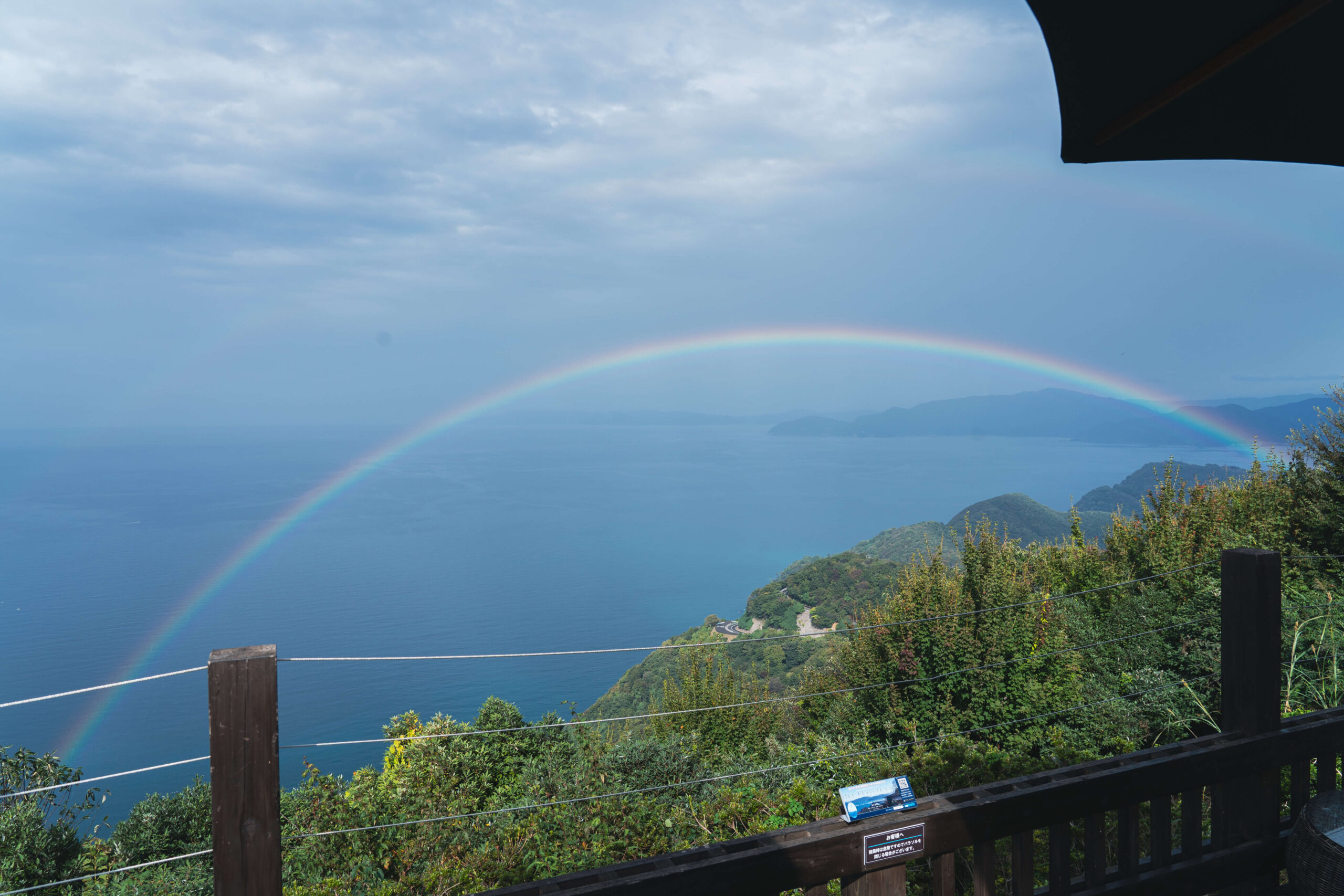There’s something about the sea that instantly softens your mind.
It might be the sound of waves, the cool air brushing against your face, or the slow rhythm that reminds you to pause.
Our short trip to Fukui Prefecture had all of that — quiet mornings, coastal views, warm food, and a little bit of adventure.
It wasn’t a luxury getaway. It was a slow, peaceful weekend that let us breathe differently — surrounded by the sea, mountains, and good food that Japan’s countryside does best.
From Gifu to Fukui: A Road Toward the Sea
We left Gifu early on a cloudy morning, coffee in hand and snacks packed.
The drive to Fukui took us through winding mountain roads, tunnels, and quiet towns. As we got closer to the coast, the scenery began to change — the mountains opened up to the blue stretch of the Sea of Japan.
The air felt cooler, lighter. You could already smell the sea.
Before reaching our campsite, we made our first stop — because no good trip starts without a proper meal.
First Stop: Gorobei — Handmade Soba in the Countryside
We arrived at Gorobei (ごろべゑ) just in time for lunch. This family-run soba restaurant sits quietly in the countryside, and even from the outside, it looks like the kind of place where time moves slower.
Inside, the warm scent of freshly ground buckwheat filled the air. The staff greeted us with calm smiles, and we sat by the window where the view opened to green fields and wooden houses.
We ordered their handmade soba, served chilled with dipping sauce and a side of tempura. Each noodle had that perfect texture — firm yet soft, with the earthy aroma that only comes from real soba flour. The tempura was crisp and delicate, especially the mountain vegetables, lightly salted and full of flavor.
It was simple food, but it carried something special — the kind of flavor that comes from care and craftsmanship passed down through generations.
Travel tip: Gorobei accepts cash only, so bring yen with you. Seating is limited, and it’s best to arrive early for lunch as they often sell out before closing.
Location: Gorobei Handmade Soba google map
Aoto Bayside Hills — Camping Beside the Sea
With full stomachs and relaxed smiles, we continued toward the coast to reach our camping destination: Aoto Bayside Hills (青戸ベイサイドヒルズ).
Located along Aoto Bay, this seaside camping ground offers a panoramic view of calm blue water and small forested islands.
When we arrived, the gentle sea breeze carried the faint scent of salt. The sound of waves echoed softly in the background as we pitched our tent. The site was beautifully maintained — clean restrooms, showers, and kitchens — ideal for campers who want comfort without losing the outdoor feel.
As the sun began to set, the entire bay turned golden. The reflection of light on the water made the moment feel magical — no phone screen or filter could truly capture it.
That evening, we prepared our own little feast by the tent: oden simmering in broth, grilled sea bream, buttery mushrooms over the flame, and Kalbi wagyu, seared to perfection over the charcoal. The air was filled with the rich aroma of the sea and smoke, a mix of salt, soy, and comfort.
We clinked our cups, said “kanpai,” and quietly enjoyed dinner as the sky turned deep blue and the stars began to scatter.
At night, the sound of gentle waves replaced music, and the moon reflected on the water like silver threads. It was calm, grounding, and exactly what we needed.
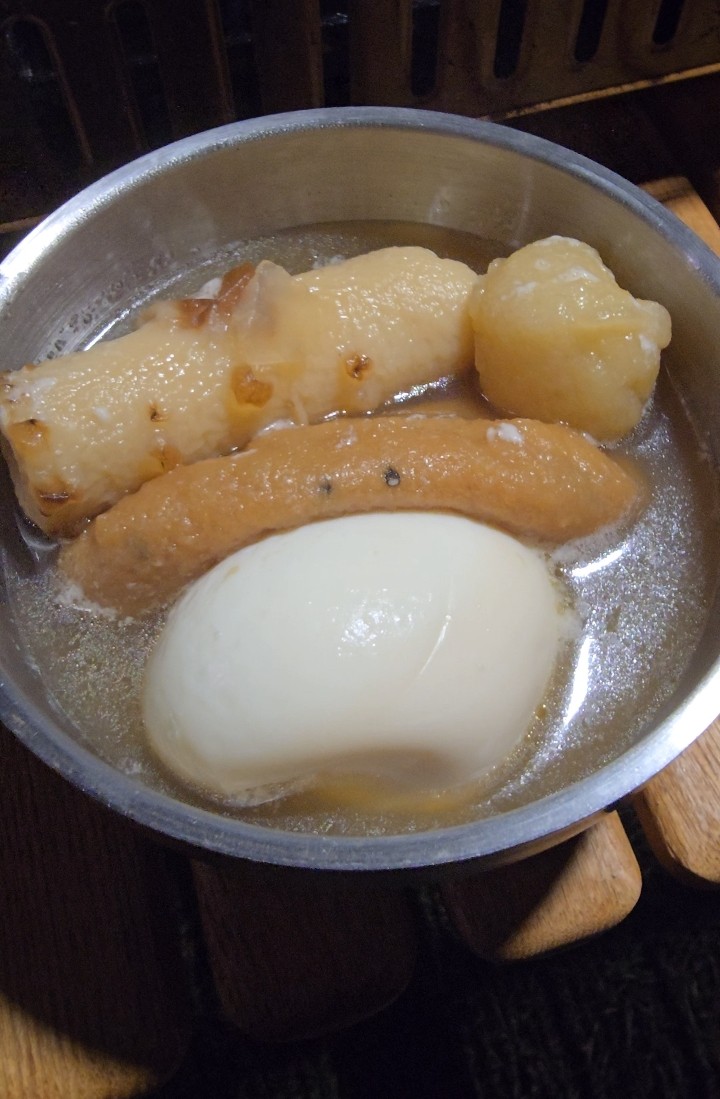
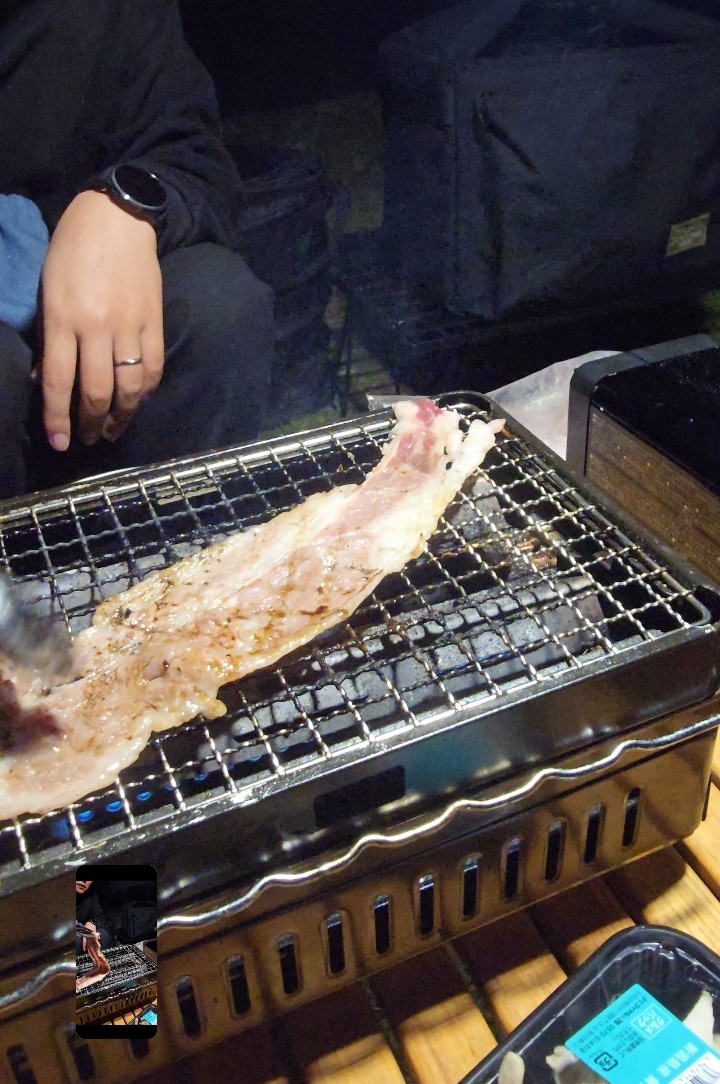
- Located in Fukui Prefecture (Ōi-town, Inumi 1-48). FUKUI若狭ONEweb+2aoto-bayside.com+2
- Facilities include: BBQ area (with both covered and open-air options) FUKUI若狭ONEweb+1
- Animal encounter area (ponies, etc) and a kids’ playground. おおい町観光協会
- Camping sites (auto-site and grassy zone) with amenities such as electricity, lighting, water tap on site. aoto-bayside.com
Travel / Visit Tips
- Reservations: For BBQ and camping, you’ll want to book ahead. For instance, BBQ requires reservation. おおい町観光協会+1
- Payment methods: When reading through the camping-site page, it states: You can choose to pay in advance online by card or on-site. If you pay on-site, you can pay by the following methods:
- cash, various credit cards, or QR code payment. aoto-bayside.com
So credit card / QR code / cash are all acceptable for the camping site. - However, if you attend the BBQ/restaurant/shop areas, you should confirm whether cash only or other methods are accepted. Some local spots, especially smaller restaurants or animal/children’s activities, may prefer cash. It is wise to bring some cash just in case.
- Access / Parking: The site mentions car access: from Maizuru-Wakasa Expressway (Obama-Nishi IC) about 10 minutes by car. FUKUI若狭ONEweb+1
- Camping check-in/out: For the camping zone – check-in 13:30–17:00, check-out ~9:30–11:00. aoto-bayside.com
- Facilities have rules: For example, direct-ground fires (直火) are prohibited on grassy sites; you must use a fire pit or fire sheet. aoto-bayside.com
- Pets: If you bring a pet, you’ll need vaccination records (rabies and mixed vaccine). aoto-bayside.com
- Time/Hours: The main facility hours for general use are 10:00–17:00; BBQ zone extends to 21:00. FUKUI若狭ONEweb+1
Morning Refresh at Hamanoyu Onsen
The next morning, the sun peeked through thin clouds, and we woke up to the soft sound of seagulls.
After packing up, we decided to take a relaxing bath before heading home — because no Japanese trip feels complete without an onsen.
We drove to Hamanoyu Onsen (はまの湯) in Wakasa, just a short drive away.
The facility was modern but warm, with large windows overlooking the sea. The baths were both indoor and outdoor — the open-air bath (rotenburo) had a stunning view of the horizon.
The water felt soft and slightly salty, said to come from a natural coastal spring. Soaking in it while watching the calm ocean was one of those rare moments when time feels suspended.
Afterward, we stayed for lunch at the restaurant inside Hamanoyu. The menu offered comforting local dishes — fried fish, rice bowl, and miso soup. It was nothing extravagant, but it tasted like home.
Hamanoyu Onsen in Wakasa offers free parking, ocean views from the lounge, and baths featuring “Seaweed Bath” and other beautifying ingredients, along with an on-site restaurant serving local dishes. Bring cash for entry and towels, or rent one at the front desk.
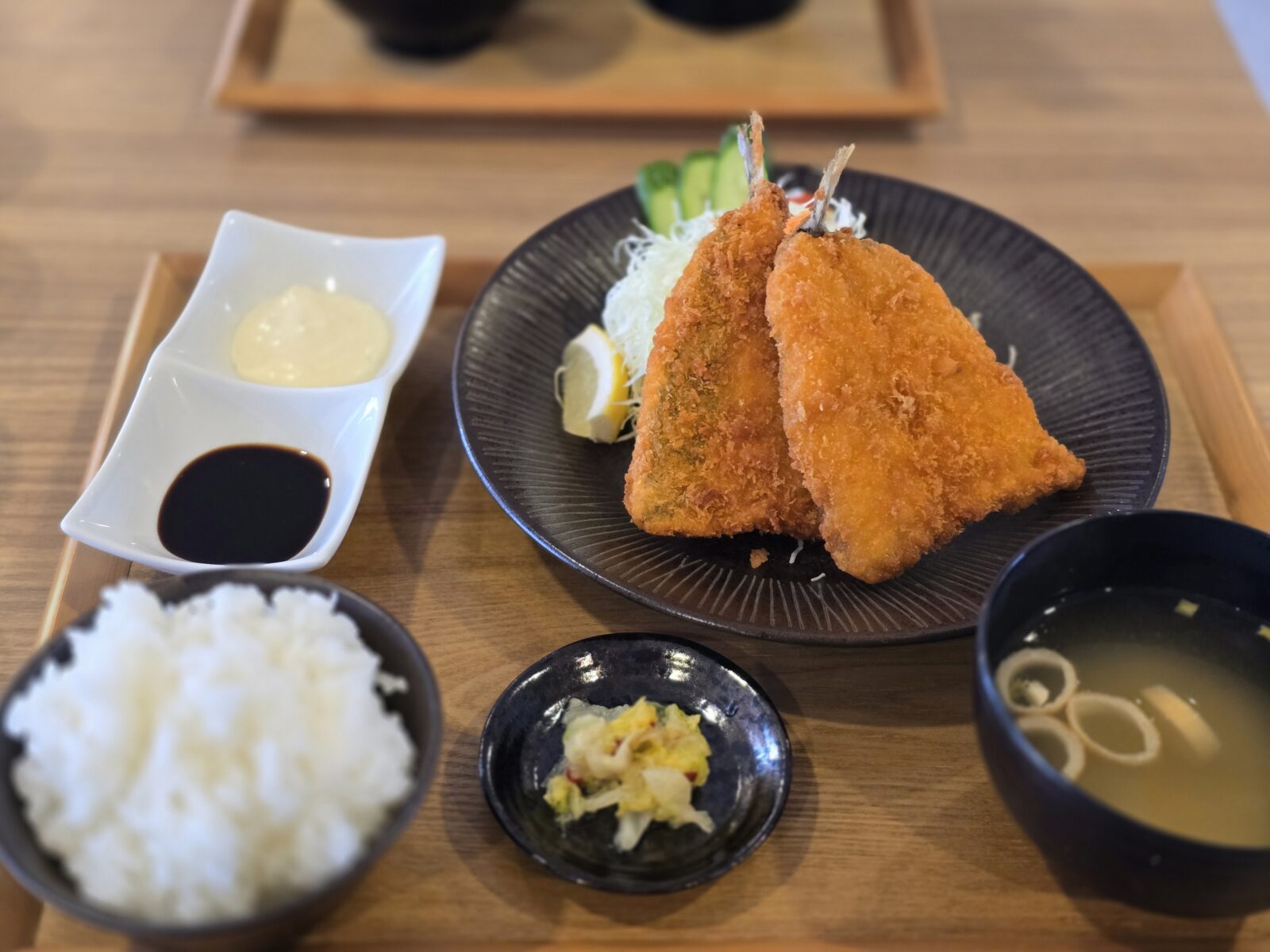
The Calm Beauty of Mikata Goko
Feeling refreshed, we drove toward Mikata Goko (三方五湖) — the Five Lakes of Mikata, one of Fukui’s most iconic natural landscapes.
Each lake — Mikata, Suigetsu, Suga, Kugushi, and Hiruga — has its own character, reflecting different shades of blue and green.
From the Rainbow Line Summit Park, you can see them all at once, stretching toward the Japan Sea. The observation terrace offers panoramic views, gentle breezes, and even small footbaths where visitors can soak their feet while admiring the scenery.
It’s one of those views that silences you — the kind that makes you realize how vast and peaceful Japan’s countryside truly is.
Mikata Goko Rainbow Line Summit Park accepts both cash and electronic payment for tickets. You can reach the summit by cable car or lift, where there’s a terrace café, footbaths, and scenic lounges. Fee parking is available at the base. Plan your visit on a clear day for the best panoramic view of the Five Lakes and the Sea of Japan.

Sweet Pause at Pâtisserie Café Ardennes Kanamori
After exploring the lakes, we stopped for coffee and sweets at Pâtisserie Café Ardennes Kanamori, a cozy café tucked near the lakeside.
The interior felt like a small European salon — warm wood, glass displays filled with beautiful cakes, and soft music in the background.
I had an order of フォルス / forusu (picture below) . My husband ordered tiramisu. Both were smooth, rich, and delicious. This patisserie has been serving sweets here for over 30 years.
We lingered for a while, sipping coffee, enjoying the silence, and watching the light dance on the lake outside.
It was the kind of café stop that feels like a reward — sweet, calm, and perfect.
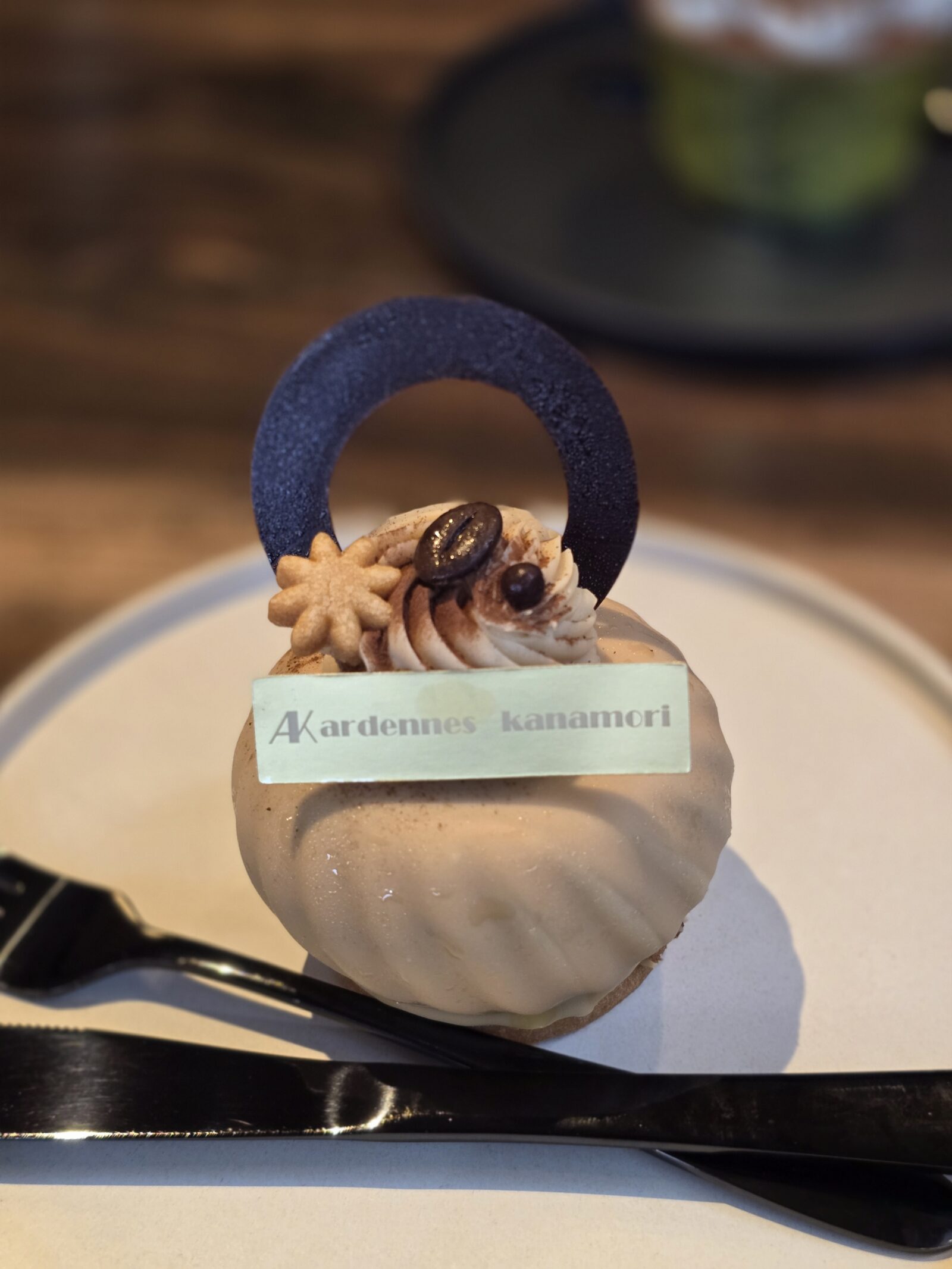
Last Stop: Mihama no Ichiba — A Taste of Local Life
On our way back home, we stopped by Mihama no Ichiba (みはまの市場), a local farmers’ and fishermen’s market near Mihama Station.
The stalls were filled with colorful vegetables, dried seafood, handmade pickles, and fresh fish caught that morning.
It’s not a tourist market — it’s a community space where locals buy their food and chat about their day. We bought some local produce and dried fish to bring home.
It was a simple stop, but somehow one of the most meaningful — a quiet way to say goodbye to Fukui before returning to Gifu.
Why I Want to Return
As we drove home, I kept thinking about how peaceful Fukui felt — the balance between sea and mountain, quiet and community.
This trip reminded me that beauty isn’t always loud. It’s in the handmade soba, the stars over the sea, the scent of cedar trees, and the warmth of onsen water.
There was no rush, no pressure to see everything — just space to breathe and enjoy.
Next time, I’d love to explore more of Obama (小浜) — a charming coastal town known for its historic streets and seafood markets. The old Sancho-machi area still preserves Edo-period townhouses, and the port is lined with traditional wooden warehouses.
Obama is also famous for its Heshiko (fermented mackerel), Wakasa lacquerware, and Habutae Mochi (羽二重餅) — a silky, soft rice cake that’s one of Fukui’s most beloved sweets.
Fukui feels like a place that always has more to show — slowly, gently, and with kindness.
Travel Tips for Visiting Fukui
- Best time to visit: Spring (April–May) and autumn (September–November) for mild weather, colorful scenery, and fewer crowds.
- Getting there: From Gifu, Fukui is about a 2.5–3-hour drive. If traveling by train, take the JR Tokaido Line to Maibara, then transfer to the Hokuriku Main Line.
- Where to stay: Aoto Bayside Hills for camping by the sea, or try a traditional ryokan in Wakasa or Obama for a cozy hot spring stay.
- Packing tip: Bring insect repellent for summer, and light jackets for cool coastal evenings.
- Local etiquette: Always wash your body before entering onsen baths, and keep quiet at campsites or bathhouses.
- Budget: Around ¥8,000–¥12,000 per person for a weekend (food, onsen, and small souvenirs included).
Local Specialties and Souvenirs from Fukui
Fukui’s food culture and craftsmanship are deeply rooted in its geography — mountains, rivers, and sea all close together. Here are a few local favorites worth bringing home:
- Echizen Soba (越前そば): A regional specialty — thin, aromatic soba served with grated daikon and dipping sauce. Many shops sell take-home packs of dried or fresh noodles.
- Heshiko (へしこ): Mackerel preserved in rice bran and salt, aged for months to develop a deep umami flavor. Often grilled or sliced thinly as a side dish with rice.
- Wakasa Lacquerware (若狭塗): Handcrafted chopsticks and trays made using layers of colored lacquer and gold powder — elegant and durable.
- Habutae Mochi (羽二重餅): Soft, silky rice cakes made with glutinous rice flour and sugar, famous for their delicate texture. A must-buy souvenir from Fukui.
- Echizen Washi (越前和紙): Beautiful handmade paper from Echizen, often used for letter sets, art, and crafts.
- Fukui Sake (福井の酒): Fukui produces many smooth, light-bodied sake — perfect as a gift or to enjoy with seafood at home.
Our weekend in Fukui reminded me how much Japan’s quieter regions have to offer — places where you can reconnect with nature, enjoy handmade food, and meet kind people.
Fukui doesn’t try to impress; it simply welcomes you.
Whether it’s camping by the sea, soaking in an onsen, or walking through a small market, each moment leaves a soft mark on your heart.
I know we’ll be back — next time to explore Obama’s old town, taste more Habutae Mochi, and maybe stay another night by the sea.
Because some places don’t ask to be rushed.
They ask you to return.

